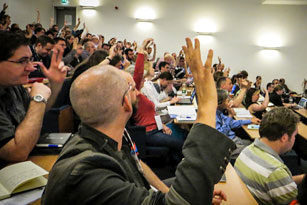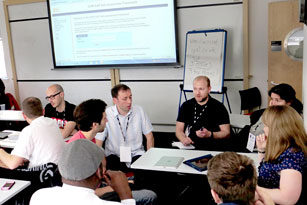About IWMW
The IWMW event supports the professional development for those working in institutional web and digital teams in the UK’s higher education community.
The event typically covers a wide range of topics or relevance to this sector including digital transformation, website/digital governance, university strategy, digital strategy, UX, accessibility, design, development, user-journeys and tasks, team management, leadership, content, measurement and analytics, change management, student recruitment and retention, tools, technologies and communications.
The event was launched in 1997 and has been held annually ever since.
If you are unfamiliar with the event you can view the web sites for recent events:
What Was New?
Innovations suggested by IWMW 2019 advisory group members included:
- Short talks on the opening day.
- A panel session on “Supporting Institutions in Changing Times“.
- An interactive plenary session in which delegates are invited by members of the University of Greenwich digital teams to “Ask Us Anything!“.
- Option to choose to attend a “lean coffee” session or one of the vendor-led and staff development workshops.
Re-live the Event!
For those who weren’t able to attend the event we live-streamed the plenary talks. Recordings of the individual talks are available.
Acknowledgements
Some of the images used were provided by the University of Greenwich. We are grateful for permission to use the images.




